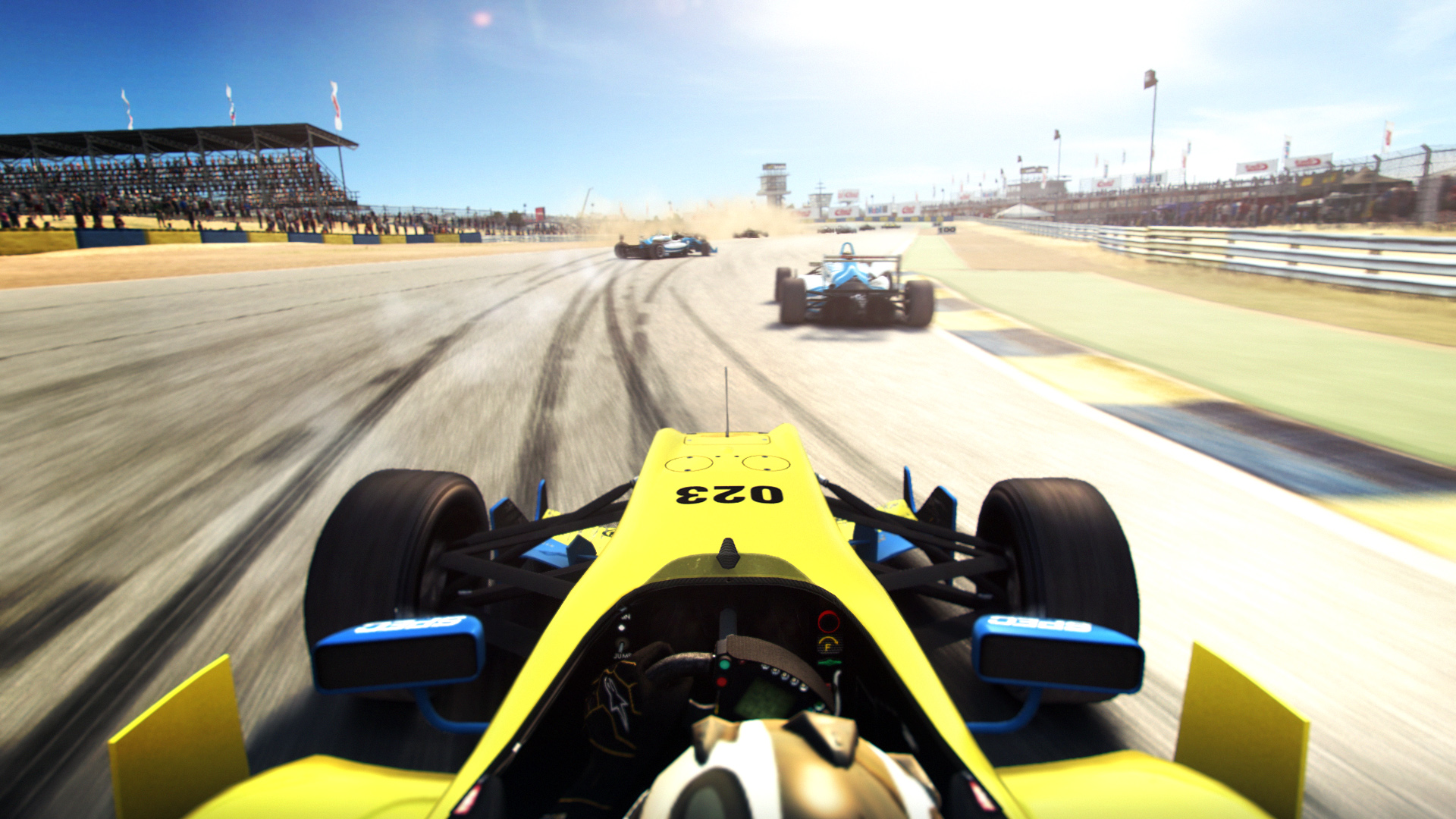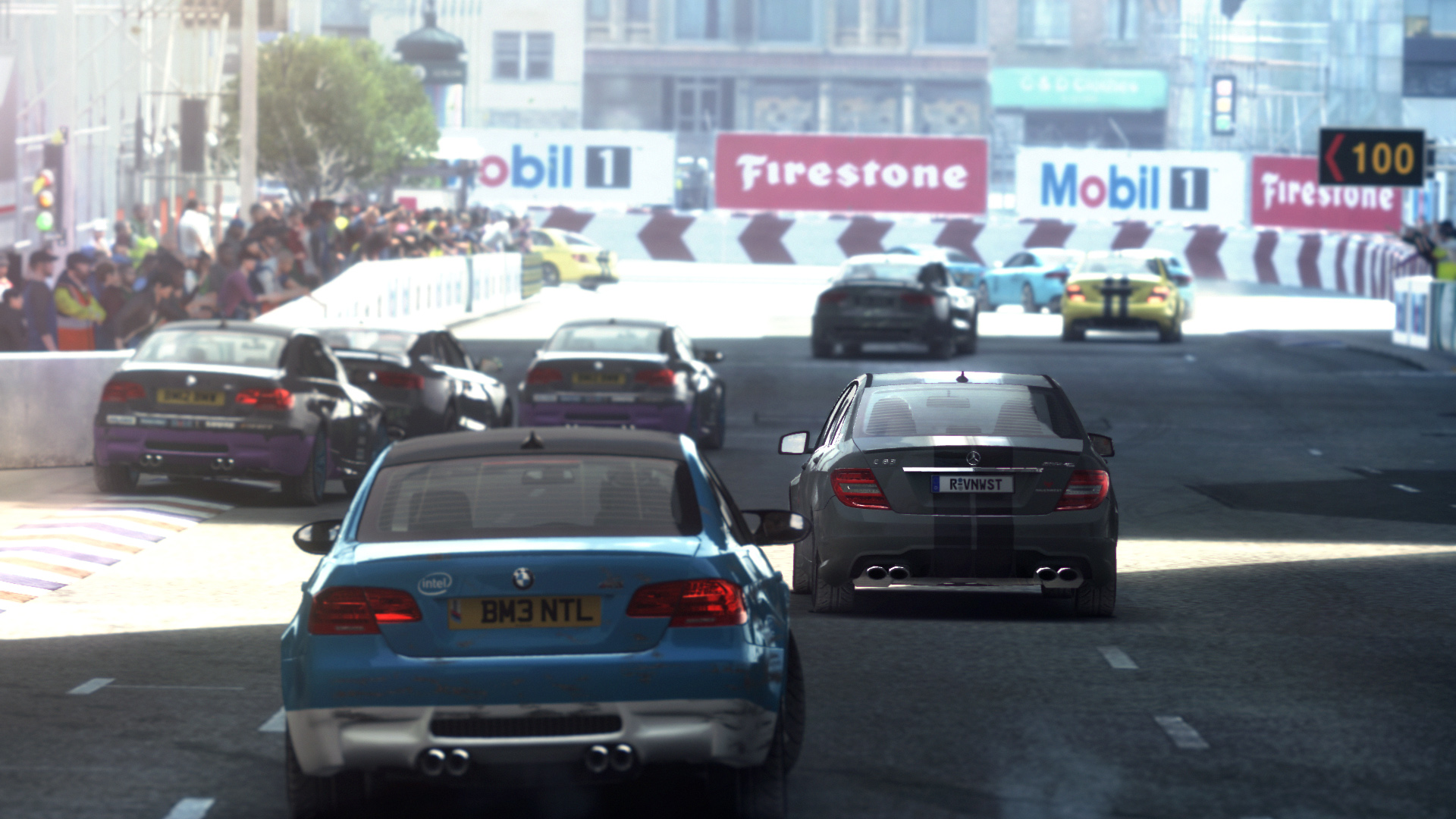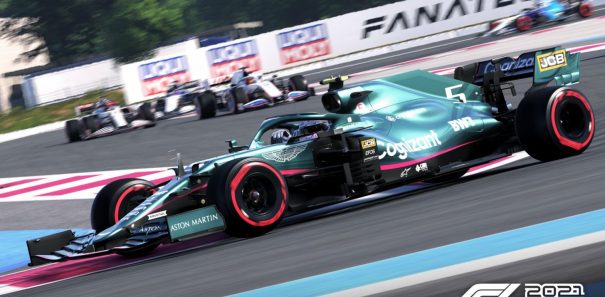Game: GRID Autosport
Platform: PC, PS3, Switch, XB360
Publisher: Codemasters, Feral Interactive
Release Date: 19/09/2019 (Switch)
Whilst I didn’t have the opptunity to play last year’s Grid 2 in-depth, it’s clear the game’s reception from racing community over the last twelve months that many weren’t overly satisfied with the title’s divisive design direction.
Seemingly, developer Codemasters also wasn’t particularly pleased with how everything panned out, having freely admitted the now-fresh-from-the-formation-lap GRID Autosport is the studio’s attempt to “move the [Grid] series back in line as a more authentic racing game [franchise]”.
The thing is, though, Codies has only had a year or so to fulfil that target brief, with a good chunk of the allocated development time also being shared with creating and releasing DLC for Autosport’s perpetually praised and punished predecessor.
So, whilst undoubtedly a majority of you will want to know how Autosport moves the Grid franchise forward, a more important question to ask may be this: how does a racing game with such a short gestation period actually stack up?
Investigation into Unsafe Release
First impressions of GRID Autosport are, if not entirely earth shattering, at least comfortably reassuring. Though nothing groundbreaking is made apparently obvious in the first few hours you spend acclimatised to the overall control scheme and game mechanics, there does appear to be enough here to whet the appetites of racing game fanatics who haven’t yet upgraded to compatible PC rigs or one of the new console offerings.
Though many game types are available, such as Time Trial, Online and the increasingly endangered Splitscreen mode, it’s the core singleplayer mode that’ll be the one many are expected to spend most of their time in, and one that should feel quite familiar to fans of Codemasters’ old Race Driver games.
Structurally, Autosport’s core singleplayer mode is about as simple as it gets whilst still retaining the veneer of autosporting authenticity: players will progress through various seasons as a contracted driver for one of ten in-game teams, participating in up to five motorsport disciplines, and unlocking additional tiers through the accumulation of XP points whilst experiencing a wide variety of racing types and performance car calibres.
If all of this sounds habitual, that’s because it’s not exactly a new concept: 2008’s critically-acclaimed Race Driver: GRiD featured a similar set-up (albeit with a simple team management system that’s been dropped for Autosport), and this type of campaign design is one that’ll debut on the eight-gen consoles this November through Project CARS.

Unsurprisingly, then, it’s not an industry-defining, boundary-pushing career mode that Autosport will be remembered. Instead, it’s the diversity of race events that sets the new Grid apart from its predecessors with Time Attacks, reverse-grid touring car races, endurance runs with simulated tyre wear and a plentiful array of one-make Cup challenges further fleshing out the hectic grand prix and drift modes from the oh-eight Race Driver.
The varied assortment of street and racing vehicles also goes some way to alleviate any previous concerns of Autosport’s constricted development schedule resulting in licensing leftovers from Grid 2 filling the new game’s auto roster: yes, the eighty-or-so cars in GRID Autosport does pale in comparison to, say, the 200 in Forza Motorsport 5, but those featured do make up a pretty diverse mix: from Aston Martins to Ariel Atoms, Holden touring cars to Honda endurance racers and classic MINIs to the McLaren P1, there’s an eclectic mix of autos available to thrash on the track, and many of them have their own custom one-make Cup events to partake in.
Grid Autosport features a wide array of car types and events, (below) the Madza 787b battle in the Eliminator:
Steering to Success
Judging by Grid 2’s critical reception, it appears the main cause for complaint lay with the game’s handling model. Indeed, we described the game’s “TrueFeel” setup last year as a “fun but flawed driving experience that isn’t very intuitive”, and that appears to be one of the kinder ways in which the system was summed up as.
Though (as explained at the very beginning of this review) there won’t be any comparisons between Autosport and its predecessor, it does appear that Grid 2’s driving physics were quite numb, unpredictable and infuriating as a result.
Reassuringly, such words don’t quite apply themselves well when chronicling how Autosport steers. It’s a given that players expecting Gran Turismo levels of simulation and realism will be sorely disappointed, but – likewise – there’s a fair bit more depth and detail to GRID’s overall handling model than you may expect from a racing game that firmly positions itself on the more arcadey side of the physics spectrum.
Without Grid 2 being an citable reference point, the best way to describe Autosport’s handling model is to say it’s like 2008’s Race Driver, except with more grip and chassis adjustability this time around. There’s still that vague floating sensation to the way in which cars bob up and down on their suspension mountings, making on-the-limit car control more an element of guesswork and faith in the physics engine than actually feeling the eb and flow of rubber-meets-the-road traction, but there’s enough tactility here to keep you on your feet.

In conjunction with the sensation of speed and the different handling characteristics for each and every car, this makes the actual racing experience – particularly when driving from eight-tenths onwards – feel unexpectedly engaging, and especially rewarding upon successfully pulling off daring corner entry speeds and brake-checking overtaking manoeuvres.
Many of the available events (depending on which team you join for that season) also allow you to tinker with the setups of the cars you’re loaned during races, though those expecting anything with the depth of, say, the tuning in Codemasters’ F1 games will be severely disappointed. Having the option there is welcome, but there’s only so much you can do with six-position sliders for parameters such as transmission aspect ratios, downforce levels and brake bias.
Given most of the cars handle pretty admirably out of the gate to begin with, it’s further confusing as to why such a feature was added beyond the reasoning that “real racing drivers do set-up work, therefore GRID Autosport players can”. There’s nothing wrong with such a feature being present in Autosport: it’s just a shame that it’s tarnished by not having that much of a fundamental impact on the actual racing, especially given the game’s focus on authenticity.
Push To Pass
As diverse as the content may be, having all these cars and tracks in GRID Autosport isn’t enough to justify its self-appointed place as an authentic (albeit highly exaggerated) representation of real-world motorsport. For that, you need good artificial intelligence programming, especially when it’s nigh-on impossible to properly test out and experience Autosport’s less singleplayer-centric modes before the June 24th review embargo.
Thankfully, Codemasters appears to have done a fairly good job of not only fleshing out the on-track driving styles of the NPCs, but also tailoring them to the racing etiquettes of the game’s respective motorsports disciplines.

As Codies alluded to in the pre-release build-up to Autosport’s release, how the artificial intelligence interacts with you primarily revolves around what tier of motorsport you’re partaking in: touring cars races are, for instance, an almost constantly chaotic affair of argy-bargy overtaking manoeuvres, whereas it’ll be rare to see such reckless behaviour from the AI when they’re piloting delicate single-seaters.
Whilst racing does appear to be considerably less violent and OTT in open-wheelers than tin top tourers, do take such procedures as purely a guidline or a rule-of-thumb principle: it is rare to see the Ravenwest Dallaras ploughing straight into your IndyCar’s side-pod, but that doesn’t mean such scenarios will never happen, nor does it diminish how utterly frustrating they are when there aren’t any Flashback features to rewind time and prepare for that last-minute lunge with.
At least the option to lengthen the race’s running time before you join the track does help soften the abrasiveness of the aggressive AI, particularly on the higher difficulty settings. Not only do longer race types further add that bit more ‘authenticity’ to the mix (a 40-minute endurance race seems far more plausible than an eight-minute one…), but also reduces the need to constantly attack each corner during the oh-so-brief standard races; giving you more time to prepare and adapt your race strategy without worrying over how you’re already halfway through the Cup challenge and have just three laps left to secure a podium position.
More Setup-Work Required
With the power of the PlayStation 4 and Xbox One further highlighting the resolution parity between them and their seventh-gen forbearers, it’s of no real surprise to hear that Autosport’s graphical capabilities are no match for what the likes of DriveClub, Project CARS and Forza Motorsport 5 can muster. Things may change for the PC version once the free HD texture pack add-on is released, but it’s safe to say Autosport’s vistas, trackside scenery and car models, whilst stunning a year ago when featured in Grid 2, really can’t claim to be the standard bearers of the industry anymore.
Likewise, the franchise’s fabled damage modelling doesn’t quite have the ability to shock and amaze in the same manner it did through 2008’s Race Driver release. Though Autosport’s car structure deformation and body panel crumpling still show what can be done on a game designed within the confines of now-obsolete hardware, it’s the smaller scuffs, scrapes and scratches – often seen incredibly pixelated through the close-up replay camera shots – that pale in comparison with what the next-gen titles can offer.
At least the pay-off for pretty graphics (not factoring in the disappointingly low-res cockpit renderings; again perhaps a sign of Autosport’s accelerated development schedule) appears to result in a mostly-steady game from a technical perspective, even when running on the PlayStation 3 (a platform that’s traditionally been the ‘worst’ of the available ‘Big Three’ platforms to experience contemporary Codemasters racing games on), with the only major hiccups coming from infrequent framerate drops and screen-tearing after heavy collisions (both almost always a result of chaotic turn one pile-ups on the opening lap).

That being said, Autosport does appear to be – in this tester’s experience – one of the more glitchy games to come out of Codemasters: for example, one particular race around Mont Tremblant’s South Loop was plagued with severe The Matrix-style slow-down from the chicane to the swooping right-hander, whilst a separate Formula C three-lap qualifying round at Sepang saw my Dallara being commandeered by Autosport’s artificial intelligence programming to fifth position (and, amusingly, setting my then-best qualy performance in the game…).
Both of those incidents have been one-off occurrences so far, but it’s still disappointing to see an otherwise good nick game suddenly studder to a halt by coding gremlins, and it’s hopeful that the seeming prominence of these bugs in comparison with other Codies games of late isn’t down to Autosport’s tight development deadline.
Conclusion
As stated earlier (albeit in a moderately paraphrased form), perhaps the biggest question that needed answering was whether Codemasters could create a capable and competitive racing game within the boundaries of a 12-month development schedule. Now we’re at reviews’ end, it’s now time to reveal the response to that query.
And the answer is ‘yes’. Somehow, someway, the team at Codemasters has managed to create a title that doesn’t feel detrimentally rushed, and can firmly position itself as a legitimately good arcade racer.
Granted, the prominence of glitches during this test did put a dampener on the whole experience, and you could argue there’s not a huge amount of singleplayer replay value once the campaign’s completed. But, at the end of the day, it’s GRID’s discipline diversity, race type variety and ‘easy to learn, difficult to master’ handling model that help cement Autosport as a consistently enjoyable driving title.
Put simply, if you loved the original Race Driver: GRiD and always hoped for an in-the-same-vein sequel to sink your multi-discipline teeth into, there’s a pretty good chance that Autosport is the racing game you’ve been waiting for.






























